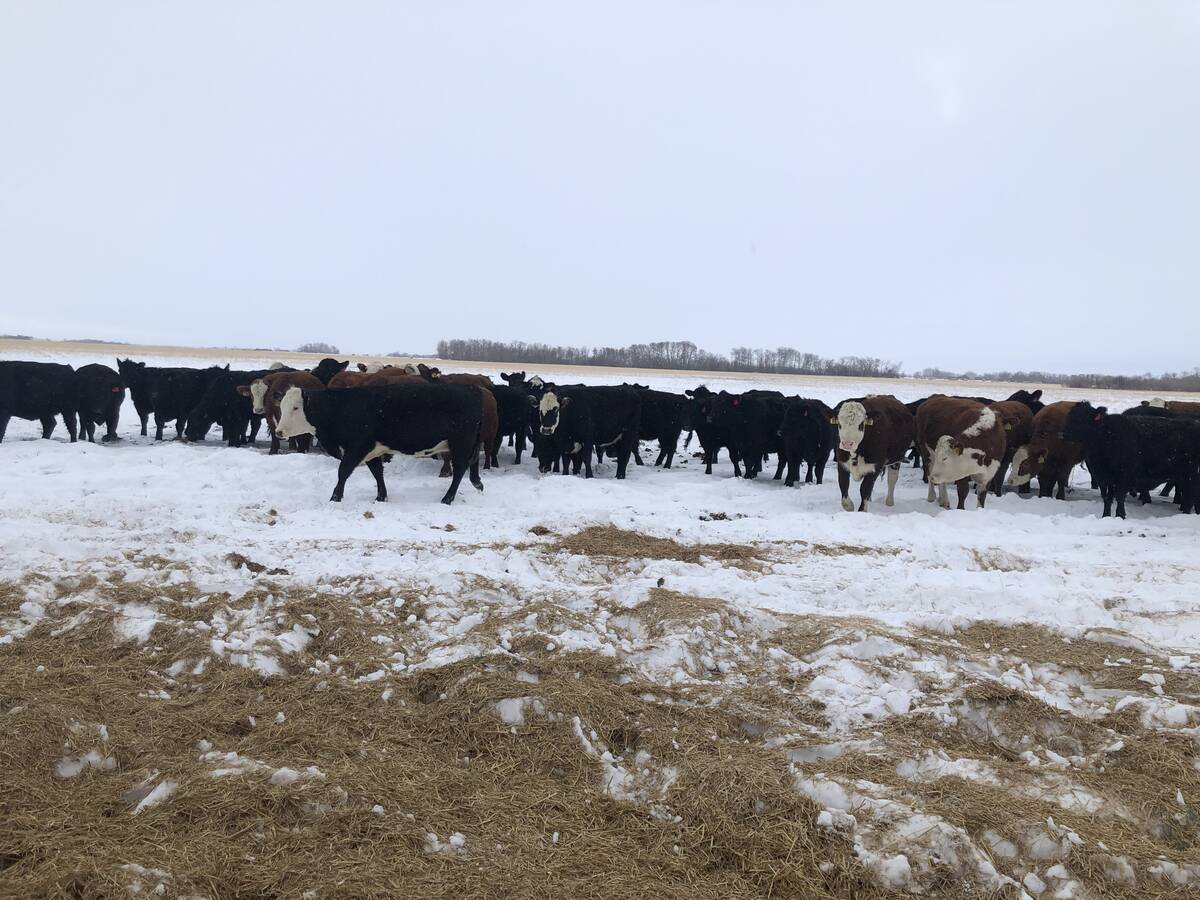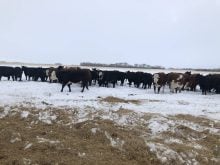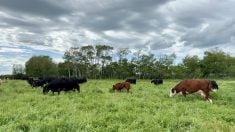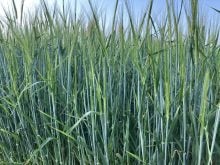As we begin the New Year and enter the coldest months, many beef cows are in the final third of their gestation period. This is when the fetus experiences its most significant growth. To support this development and ensure the birth of a healthy calf, it is essential to provide the cow with proper nutrition. The fetus relies on nutrients from the cow’s bloodstream, which are transferred across the placenta. If the cow is underfed during this crucial time, it can lead to higher neonatal calf mortality, respiratory and intestinal issues, metabolic disorders, and reduced birth weight and growth rates. Furthermore, underfeeding during late gestation can delay the cow’s return to estrus, lower first-service conception rates and, depending on the length of the breeding season, result in the cow being culled for not becoming pregnant.
- RELATED: Winter feeding management for cattle
With cattle prices at record highs, it’s clear that a well-managed feeding program is critical to maximizing the profitability of any cow-calf operation.
During late gestation, a typical 1,250-1,300-lb. beef cow’s nutritional requirements increase significantly compared to mid-gestation. Specifically, energy needs rise by about 30 per cent, protein by 20 per cent, calcium by 45 per cent and phosphorus by 25 per cent. On top of these increased nutritional demands, the coldest months — January and February — raise the energy required to maintain body temperature, especially when temperatures drop below -15 C. Cows in good body condition (three to 3.5 on a five-point scale) can handle the cold better, but thin cows will lose more heat and require higher-energy diets.
As temperatures drop, cows typically increase dry matter intake by 10-25 per cent to meet these higher energy needs. However, this increase in intake can reduce the digestibility of the diet, as the digesta passes more quickly through the digestive system.
While cows may try to increase their intake, meeting their energy needs with high-roughage, bulky diets can be challenging. In such cases, adding concentrates, pellets or grain may be necessary. When temperatures reach the -20 C to -25 C range, cows on low-quality forage, such as straw, may struggle with impaction due to increased intake. A good rule of thumb in Western Canada is to add an extra two pounds of grain for every 10 C drop below -20 C.
Read Also

Picking the most efficient cows to rebuild your cow herd
A new cow ranking system to help beef farmers and ranchers pick the most efficient cows as they rebuild their herds.
As the fetus grows and takes up more space in the cow’s abdomen, it reduces the room available for the rumen, limiting dry matter intake. This is especially important in the final month of gestation. When increasing grain in the diet, take caution to avoid ruminal acidosis, which could cause further complications.
A better strategy during late gestation is to transition cows to higher-quality forages (e.g., hay, silage or green feed). These forages are more easily digestible, promoting greater feed intake and providing the cow with more energy. This approach also helps avoid issues with ruminal acidosis and decreased fibre digestion that can arise from feeding large quantities of grain. Aim for forages with at least nine per cent crude protein and 60 per cent total digestible nutrients (TDN).
In addition to proper nutrition, it’s essential to provide adequate wind protection, bedding and access to water. Keeping cows in sheltered areas with windbreaks and dry bedding reduces heat loss and reduces the increase in energy requirements. This means cows need less feed to stay warm. Water access is equally important, as it stimulates feed intake and prevents issues such as impaction. In extensive systems, where water may not be easily accessible, cows may have to travel long distances to drink, further adding to their energy demands.
In addition to energy and protein, don’t forget to provide the necessary vitamins and minerals. Deficiencies in minerals such as selenium can lead to white muscle disease, while insufficient vitamin A can cause blindness in newborn calves. Pay special attention to the chemical composition of forages, as high nitrate levels (greater than 0.5 or one per cent) can lead to toxicity, and excessive potassium (greater than two per cent of the diet dry matter) may cause tetany or milk fever.
The best way to ensure adequate mineral and vitamin intake is by incorporating them into a total mixed ration or concentrate pellet. This ensures the cows receive balanced nutrition and minimizes the risk of deficiencies or excesses.

















